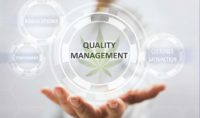When cannabidiol (CBD) and hemp finally hit the stock market — after decades of prohibition — many investors saw an opportunity. However, in 2019, much of the optimism behind hemp’s stock jump came tumbling down, namely due to an overabundance in products and lack of demand for this quantity.
So, where can we expect stocks to go from here?
This is a tricky question to ask and you should be wary of any article that claims they know where the stock market is heading. While educated guesses can be insightful, no one really knows whether a stock is going to go up or down. There are a number of different factors that play a large role in this outcome, many of which are unique to the particular industry.
In terms of CBD, all eyes are on US government, as their long-awaited regulations are going to play a significant role in hemp stocks. For example, some experts have predicted that cannabis extracts in foods and beverages could increase demand for CBD.
There are two major issues with government regulations that are playing a significant role in hemp and CBD sales:
- A lack of Food & Drug Administration (FDA) approval and the hazy legal status in some states impacts the public’s trust and knowledge of CBD. Not to mention, it allows businesses with irresponsible practices to enter the marketplace.
- Overregulation on particular aspects of the industry prevents consumers from trying CBD through new avenues.
With the right federal regulations, CBD does have the potential to work its way up again.
Still, we shouldn’t forget that part of the reason stocks went down in the first place is overproduction. Many experts claimed there would be a huge demand for CBD when the 2018 Farm Bill legalized hemp and hemp-derived products. And while there was an initial spike in demand, these predictions were far from accurate and the market just wasn’t there.
With all this said, it’s impossible to know what’s going to happen next. If government regulations work in favor of the CBD industry, consumer confidence may further increase. However, the opposite remains possible if government regulations create more skepticism in the marketplace.
Since the hemp industry is still very new, we need to remember how important our role is too in spreading knowledge about this plant. Currently, there’s too much misinformation out there and, with that, a lack of trust overall in hemp and CBD.
Image Credit: Chris Liverani
Image Source: https://unsplash.com/photos/dBI_My696Rk





